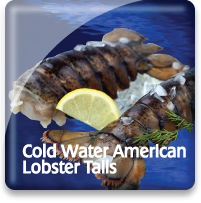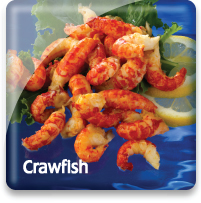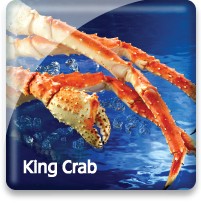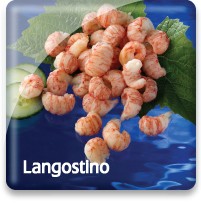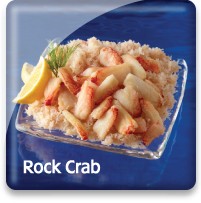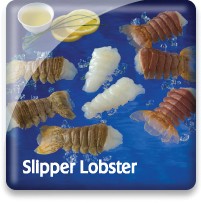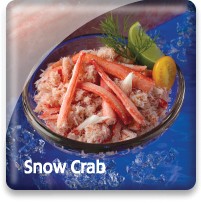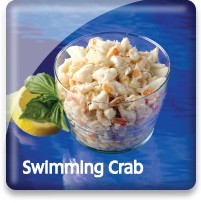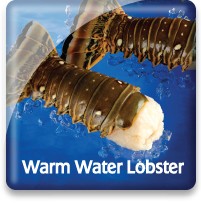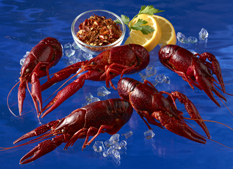
Crawfish

Market Name: Eating QualitiesCrawfish have a mild flavor and fairly firm texture. Their flavor is enhanced typically by Cajun spices in their preparation.
Crawfish move in a forward motion when walking, but when swimming, they move in a backward motion.
|
Description & CharacteristicsFreshwater crawfish are a relative to clawed lobsters. Crawfishing has a long history in the U.S., dating back to the Native Americans and the first European settlers. They are known by a wide variety of other names such as crayfish, crawdad, crawdaddy, and mud bug.Farmed crawfish in the U.S. consist of primarily of the red swamp crawfish, Procambarus clarkii. In the U.S., most crawfish is produced in Louisiana, although a few other southern states produce some commercial volumes. The U.S. currently supplies approximately 70% of the world's commercial supply. In the 1930s the red swamp crawfish was introduced into China and they quickly established themselves in the wild. Chinese production of crayfish is primarily based on this wild fishery that takes place in the lakes, ponds, and river systems of the provinces of Jiangsu, Zhejiang, Hubei, and Xiamen. Chinese imports of crawfish meat flooded the U.S. market which resulted in a successful anti-dumping tariff in the late 1990s. Despite the trade sanctions, Chinese crawfish and crawfish tail meat have become an important component in the U.S. supply. Chinese imports have supplemented a tight supply during times of drought or poor U.S. production. Sea Port sources from the Chinese wild fishery. Farmed and wild crawfish are seasonal with U.S. production from November to June—with peak supplies in April and May. The Chinese wild harvest runs from May to September. U.S. crawfish farms are drained from April to June when conditions are right to simulate the dry summer period. The crawfish at that time burrow one to three feet into the pond bottom where they lay eggs. They remain underground during the summer, during which time vegetation is introduced into the pond as forage, or as a double crop such as rice. In October the pond is re-flooded and both adults and juveniles leave their burrows and distribute themselves throughout. Juveniles can reach marketable size in three to four months if conditions are right. Farmed U.S. and Chinese wild crawfish are harvested using baited traps. Crawfish are sold whole; live or cooked, and may be purged to empty the intestinal tract of ingested matter. This step eliminates the dark tract but is not necessary. Whole crawfish are generally sold in the following count sizes per pound: under 15, 16-20, and 21-or-more. Live crawfish are packed tightly in onion bags for shipment. Bags are usually 40 to 80 pounds each. Crawfish will survive for three or four days in these bags if they are kept chilled with reasonable air circulation.
Cooked crawfish tail meats are fresh or frozen and offered with the fat on or off. Crawfish have quantities of fat in the head, similar to the tamale of a lobster. This fat is used as a basis for the rich sauces that are traditional with crawfish. Meat is generally graded as under 80, 80-100, 100-150, and 150-200 count per pound. Tail meat is used in many preparations, including gumbo, etouffe, and jambalaya.
Other Resources
|
Handling Instructions for Crayfish
Our crawfish is offered as IQF whole cooked and vacuum packed extracted cooked tail meat. Both forms should be stored at or below 0°F (-18°C) and then thawed properly when ready to consume. The frozen shelf life for both products is 18 months. Links to proper seafood handling instructions: NOAA - Fish Watch: Handling Seafood and A Consumer Guide to Safe Seafood Handling.
Thawing Crawfish
Our crawfish tail meat is frozen in 1# vacuum packs. The FDA requires that you never thaw vacuum packed seafood in the refrigerator due to the fact that the anaerobic (airless) environment may allow for the growth of the bacterium Clostridium botulinum that could cause botulism food poisoning. They recommend that you remove the product from the vacuum packaging or break the vacuum seal and eliminate this risk and then proceed with thawing. Thawing is accomplished by placing the product in a plastic container or bag and placing in the refrigerator (33 to 39°F) for 12-24 hours. Our IQF whole cooked crawfish can also be thawed using this method. This thawing method helps retain the natural juices and flavors of both the whole cooked and cooked tail meat forms. Crawfish that is not consumed promptly after thawing needs to be refrigerated between 33 and 39°F and consumed within 2-3 days.
Important Instructions for Crawfish
The Federal Food, Drug and Cosmetic Act now requires that all foods that are not raw agricultural commodities and that contain a major food allergen be labeled to clearly identify the name of the food source form which the allergen is derived. (21 CFR U.S.C. 343(w)(1)). The act defines eight foods, and any ingredients derived from these foods as major food allergens: Fish, Crustacean Shellfish, Milk, Eggs, Tree Nuts, Peanuts, Wheat & Soybeans. The name of the food source that must be listed on the label for fish or crustacean shellfish must be the specific type of fish or crustacean shellfish. The market names of species of fish and crustacean shellfish should be used to identify the food source of these two major food allergens. If you intend to re-pack these seafood products, be sure the allergen is declared in either one of two ways:
1) Within the list of ingredients
or
2) In a separate “Contains” statement immediately after or adjacent to the list of ingredients.
Consult the Fish and Fishery Products Hazards and Controls Guidance, Fourth Edition, Chapter 19 for more detailed information on the labeling of food allergens.
Cooking Tips
Precooked crawfish can be consumed chilled or in various heated preparations. Links to crawfish tail meat cooking tips and recipes.
China
With more than 1.3 billion people, China is today the world’s most populous country. With a growing economy fueling an appetite for seafood, China has begun importing seafood for in-country consumption, as well as exporting a great deal of its production. In fact, since 2002, China has continued to export more fish and fishery products than any other country in the world, with Japan, the United States, and the Republic of Korea as its main export markets.
Chinese distant water fishing activities started in 1985 when China gained access to new fishing grounds through agreements with foreign countries. China operates vessels in West Africa, the North Pacific, and tuna longline vessels in the South Pacific. In addition, squid are harvested in the Japan Sea, the South Atlantic, and the North Pacific under Chinese-flagged vessels.
Carp are also commercially important, as are bream, shad, eel, catfish, rainbow trout, salmon, whitebait, mullet, mandarin fish, perch, sturgeon, and murrel (snakehead). Commercial shellfish include Saltwater & freshwater shrimp, river crabs, and mollusks such as mussels, clams, oysters, and freshwater snails.
With one-fifth of the world’s population, and an official government policy to promote aquaculture, China has today become an aquaculture powerhouse, now producing more than two-thirds of the world’s aquaculture species. Fish and shellfish are grown in freshwater and saltwater environments.
Go Blue! Seafood Sustainability Spectrum
*Click here for an explanation of our Sustainability Spectrum
Sustainability AssessmentRed swamp Crayfish or commonly called just Crayfish, crawfish, or crawdads are a freshwater species native to northern Mexico and the southeastern United States. It is farmed predominantly in the US and Sea Port imports primarily wild caught Crayfish from China. The U.S. native Crayfish (Procambarus clarkii) was introduced to China by way of Japan in the 1930s. Today China is now the world’s largest producer of both wild caught and farm raised crayfish. China has experienced serious environmental consequences due to the introduction of this foreign invasive species. However, today Crayfish are an important export commodity and also a highly priced seafood delicacy for the Chinese people. In early 2017, a Chinese crawfish processor received BAP (Best Aquaculture Practices) certification.
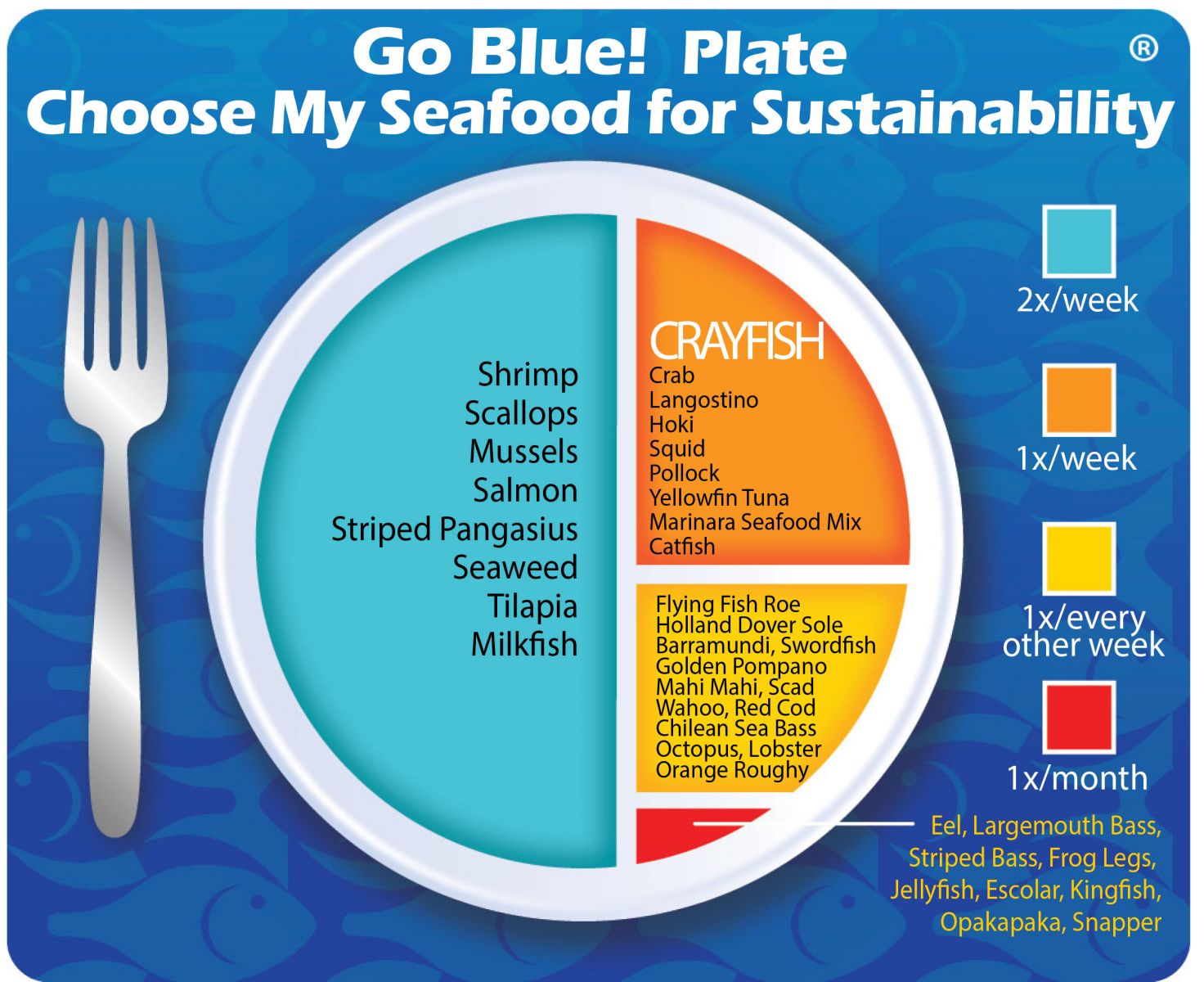
Environmental Impact: High (in non-native areas)Farming red swamp Crayfish in areas where the species is native can have minimal environmental impacts. In non-native areas such as China, introduced and escaped Crayfish can have major negative effects on native species through predation, competition, and spreading disease. In areas of China that have had crawfish present for over 80 years, the negative impacts to their current habitats have become moderate.
Sustainability Improvements NeededRed swamp Crayfish should not be farmed or introduced into new areas in China. When farmed and harvested responsibly in established areas in China, best management practices should be adopted.
Actions that Sea Port is UndertakingSea Port prefers to source wild caught Chinese Crayfish from feral populations that have established themselves in southern China over the past 80 years. Nearly 90 years after its introduction to China, most Chinese regard American Crayfish as a wonderful seafood delicacy and as an important export commodity to sell back to the U.S. market. It is interesting to note that in a somewhat similar manner another species that was native to America, the bay scallop (Argopecten irradians) was introduced to China and now China provides the U.S. market with this sustainably farmed raised scallop. Sea Port believes that, in aggregate, choosing from a diverse variety of seafood is better for sustaining the world’s seafood resources and Chinese Crawfish can certainly add to this needed variety.
|


